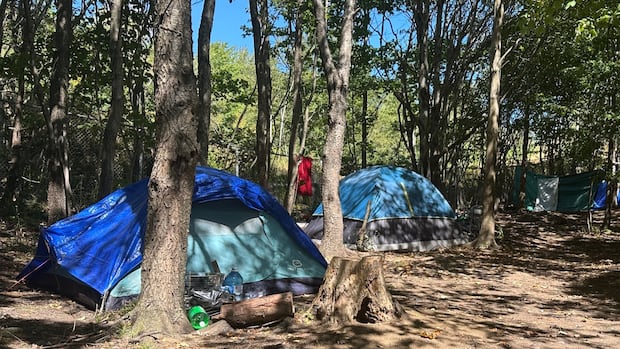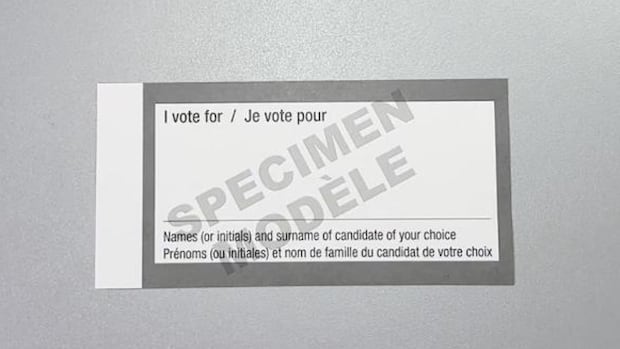Before Justin Gill began working at NorWest Community Health Centres (NWCHC), he thought fentanyl was the most toxic substance impacting drug users in Thunder Bay, Ont.
But he was wrong.
Using the organization’s drug analyzer machine, he found traces of carfentanil — which is 100 times stronger than fentanyl — and nitazenes in the substances people brought in.
“That was very alarming,” he said. “People think they’re getting one thing but there’s multiple things in their substance that can kill them in very small amounts.”
The Thunder Bay district continues to have the highest opioid-related death rate in Ontario, at nearly five times the provincial average.
Meanwhile, the region’s only supervised consumption site — Path 525 — closed at the end of March due to new provincial rules about how close sites can be to schools and childcare settings.
NWCHC, which operated Path 525, is now the lead partner for a new Homelessness and Addiction Recovery Treatment (HART) Hub in town. However, unlike supervised consumption sites, these hubs do not allow drug consumption, safer supply or needle exchange programs.
In order to continue operating its drug analyzer machine, NWCHC sought a federal exemption under the Controlled Drugs and Substances Act. The organization received support from the City of Thunder Bay to get the program up and running through the Emergency Treatment Fund.
This week, the organization launched a new mobile outreach van, which has been retrofitted to allow the machine to be used on board.
People think they’re getting one thing but there’s multiple things in their substance that can kill them in very small amounts.– Justin Gill, harm reduction support worker
“It tells you exactly every single thing that’s in there,” said Gill, who formerly worked at Path 525 and is now a harm reduction support worker for the mobile outreach van.
“When people come to test their substances, I don’t know whose it is or why they’re testing it, right? But for whatever reason it is, everybody deserves to know.”
Increasingly toxic drug supply
Juanita Lawson, executive director of NWCHC, said the organization was already looking into offering mobile drug checking services before Path 525’s closure.
“One of the exciting things we’ll be able to do is to go to locations in the city, make it — we’re hoping — more accessible for individuals who might not have come into our program,” Lawson said.
“Then also going to events such as music festivals or going to locations in the city where we know people might be using substances, and making sure they have access.”
The drug checking machine uses Raman laser technology to scan substances, conducting either trace scans of small samples or bulk scanning through a clear bag.
“It only needs a tiny amount, so I’m not going to be taking a big chunk of the supply from the client,” Gill said.
NWCHC posts summaries of its drug tests online to let the community know what’s in the street supply. In January, about 63 per cent of the substances tested were not what clients expected.
The more toxic a substance is, the more difficult it is to reverse the effects of an overdose caused by its consumption, Lawson said.
By educating people about what’s in the substances they have, this allows them to make an informed choice about whether they want to consume them, she said, which in turn can reduce overdose rates and ease the strain on the community’s emergency medical services.
“Our workers who are on the bus will be able to do some health teaching about how to maybe use smaller doses or potentially not use that substance at all,” Lawson said.
Building trust with clients
A key part of the program’s success is the outreach workers on board, who are able to build a rapport with people who use drugs in the community.
“We know our outreach workers … can develop safe, trusting relationships with individuals that come in, no questions asked,” Lawson said.
“We just want people to be safe and we want to also provide them some resources that they might need to navigate to other services.”
Long-time advocate Kyle Arnold is more than six years into recovery from addiction and a well-known figure in Thunder Bay’s recovery community. He is now a community support worker specializing in addiction for Long Lake #58 First Nation.
“I think that it’s so vital to have outreach and outreach [from] people with lived experience, because at the end of the day, we are very aware of how to deal with those sort of situations,” Arnold said.
His hope is that the mobile outreach van helps bridge the gap in services resulting from Path 525’s closure, he said.
“It adds a lot of safety to the community of drug users,” said Arnold.
NWCHC is continuing to use the free LifeguardConnect app to issue alerts about toxic substances in the community. The app includes information about opioids and addiction services.
For those consuming substances alone, they can use the app to set a timer, which will alert emergency medical services of their location if it’s not turned off — signalling a potential overdose.
The mobile outreach van is operating Monday through Friday from 10 a.m. until 6 p.m., though NWCHC is seeking feedback on how it can be expanded going forward. A map will be posted to its site soon of the route the van will take and where people can find it.




